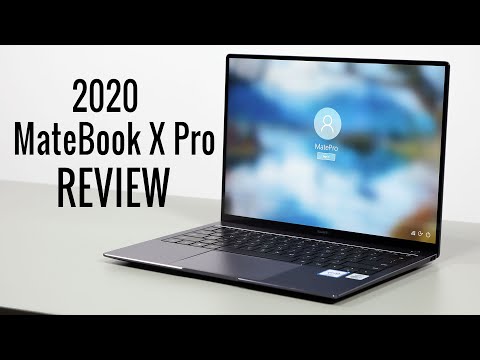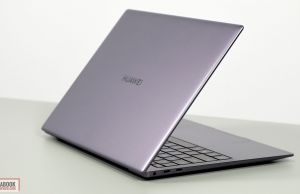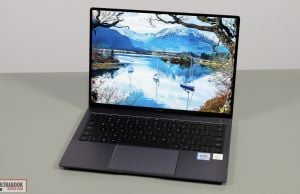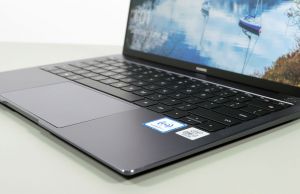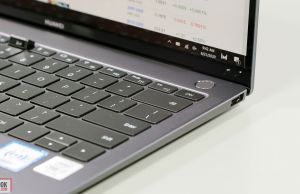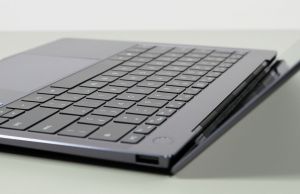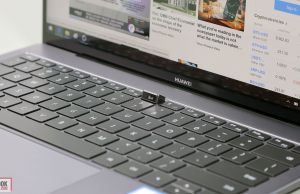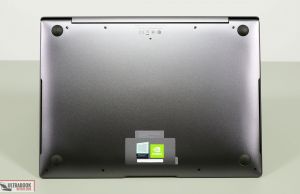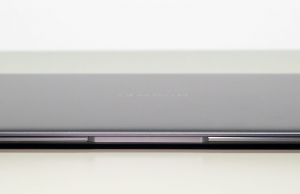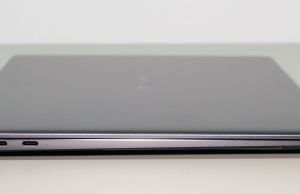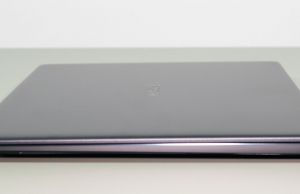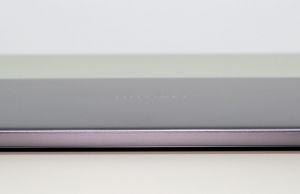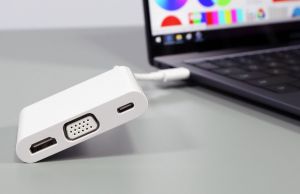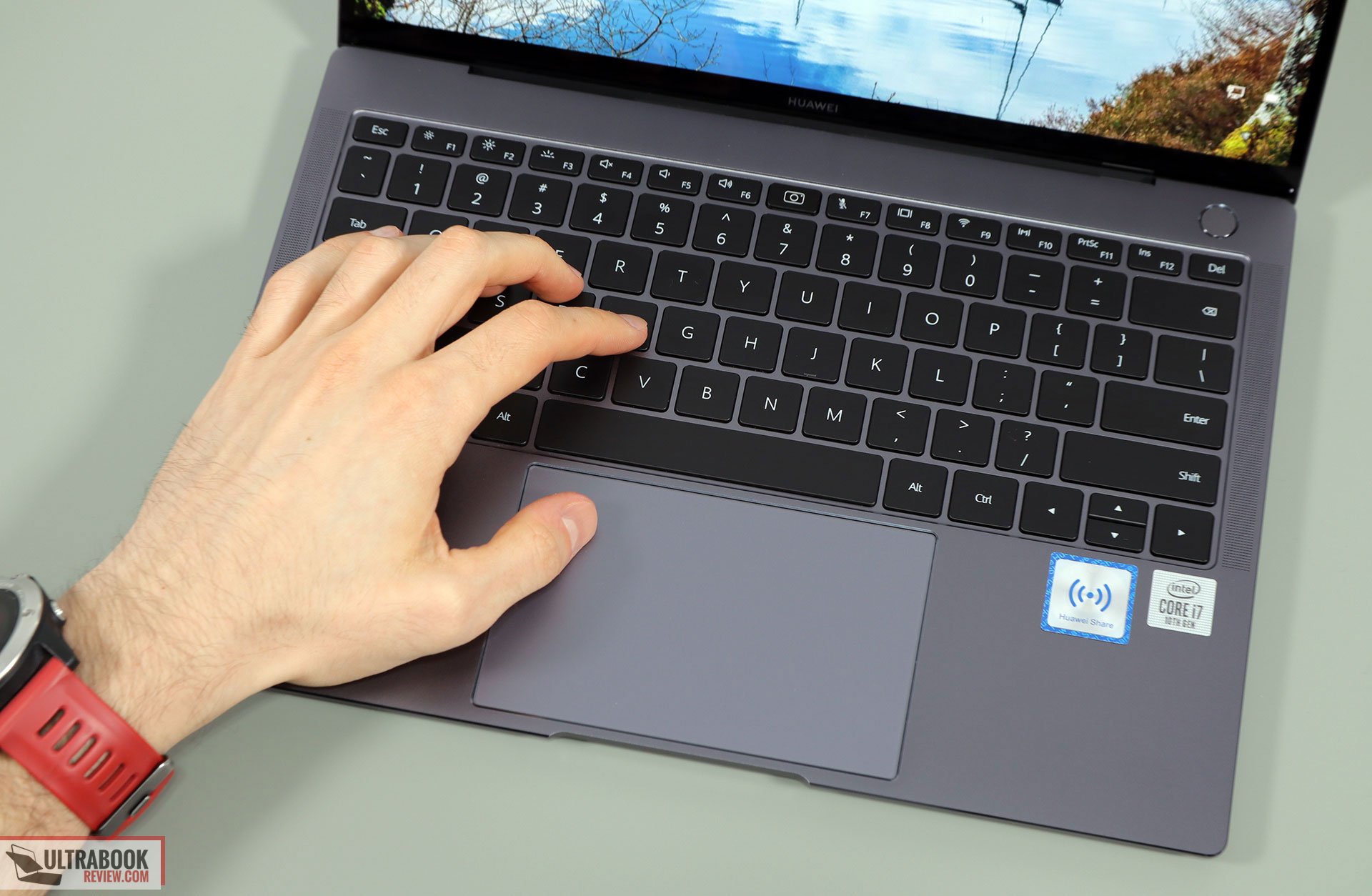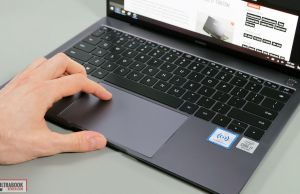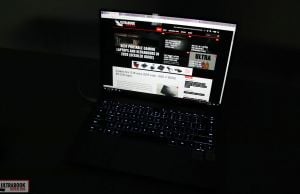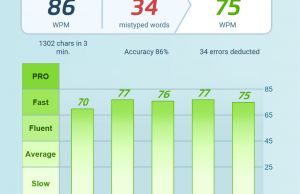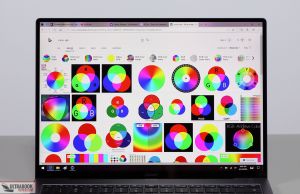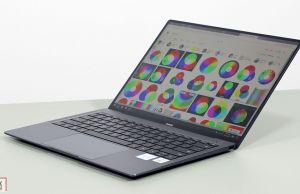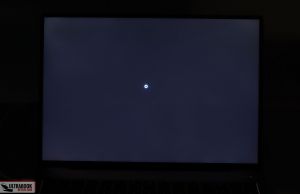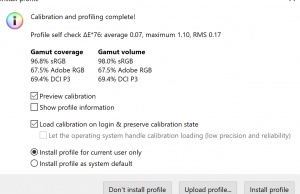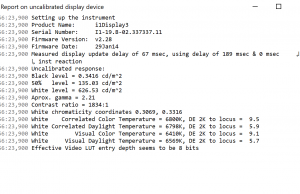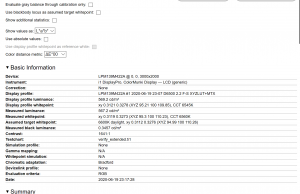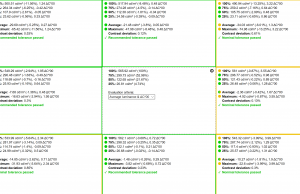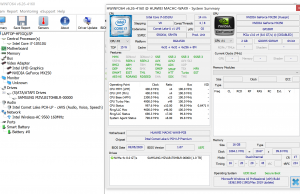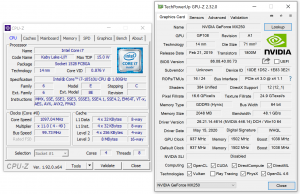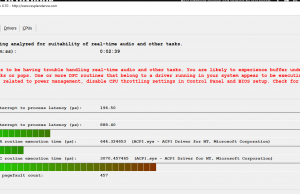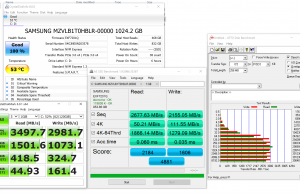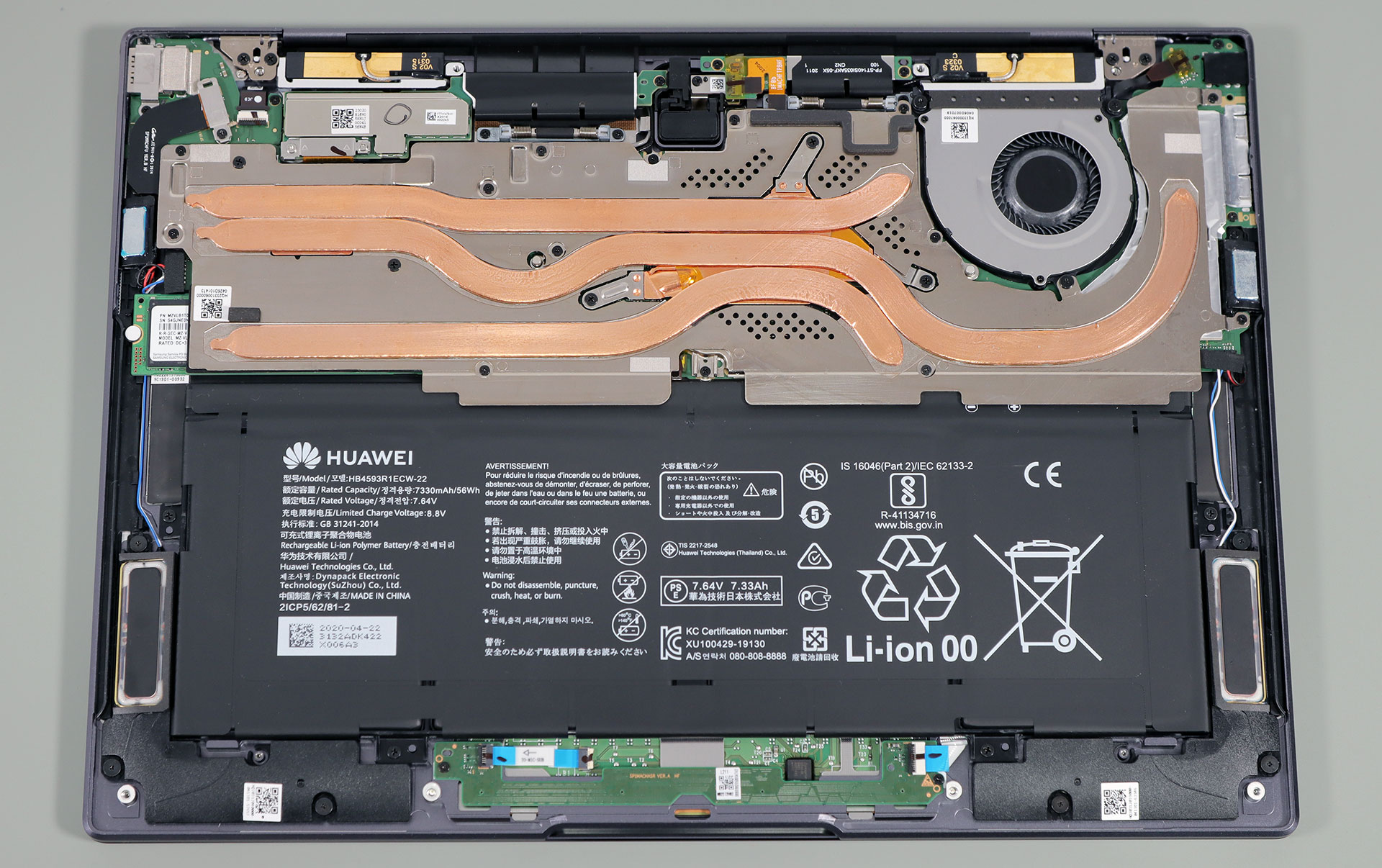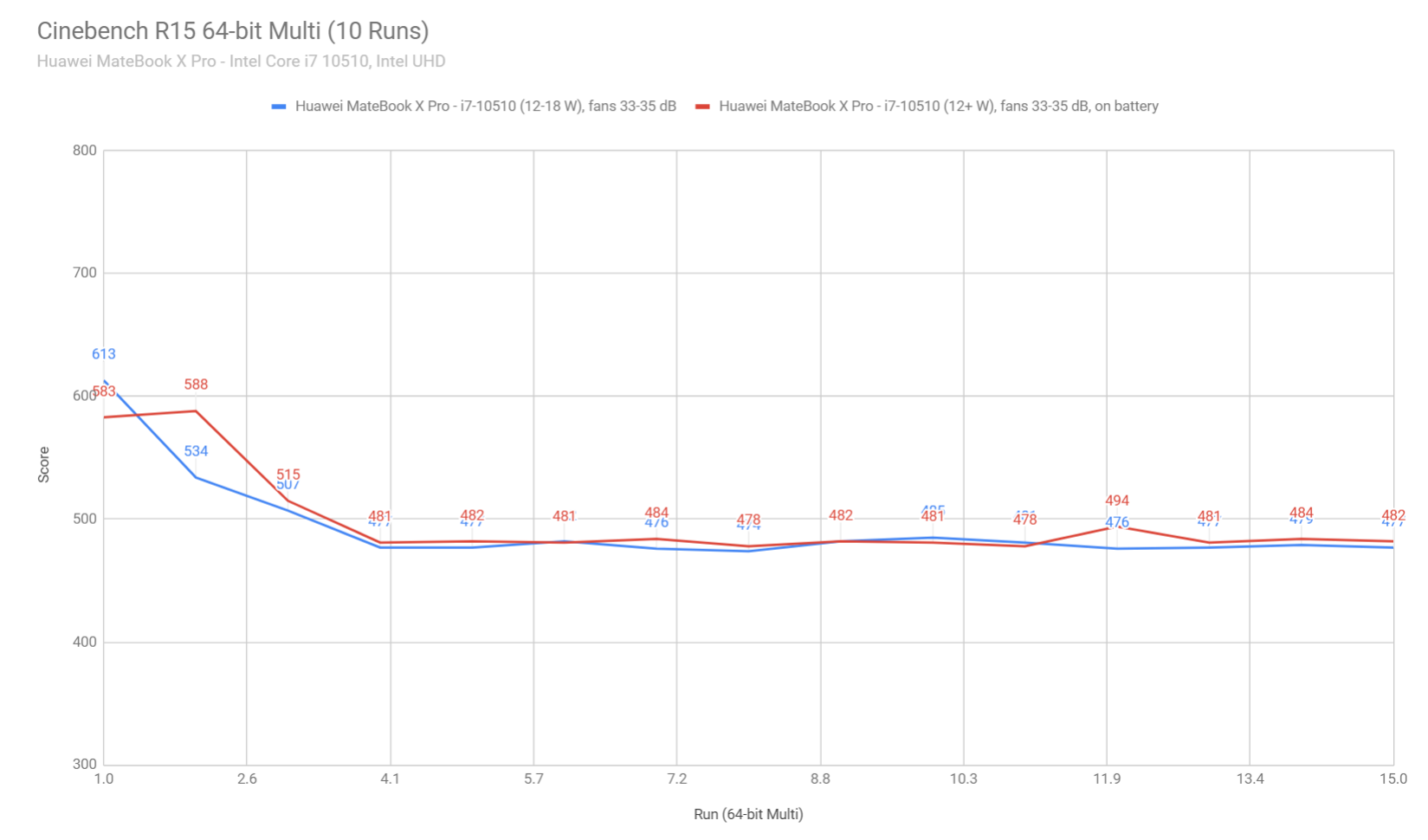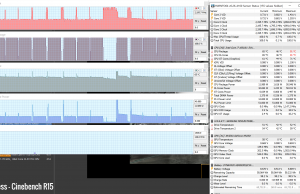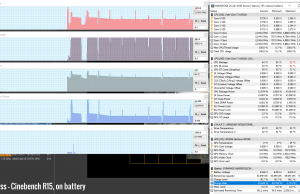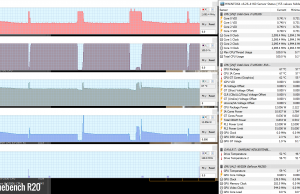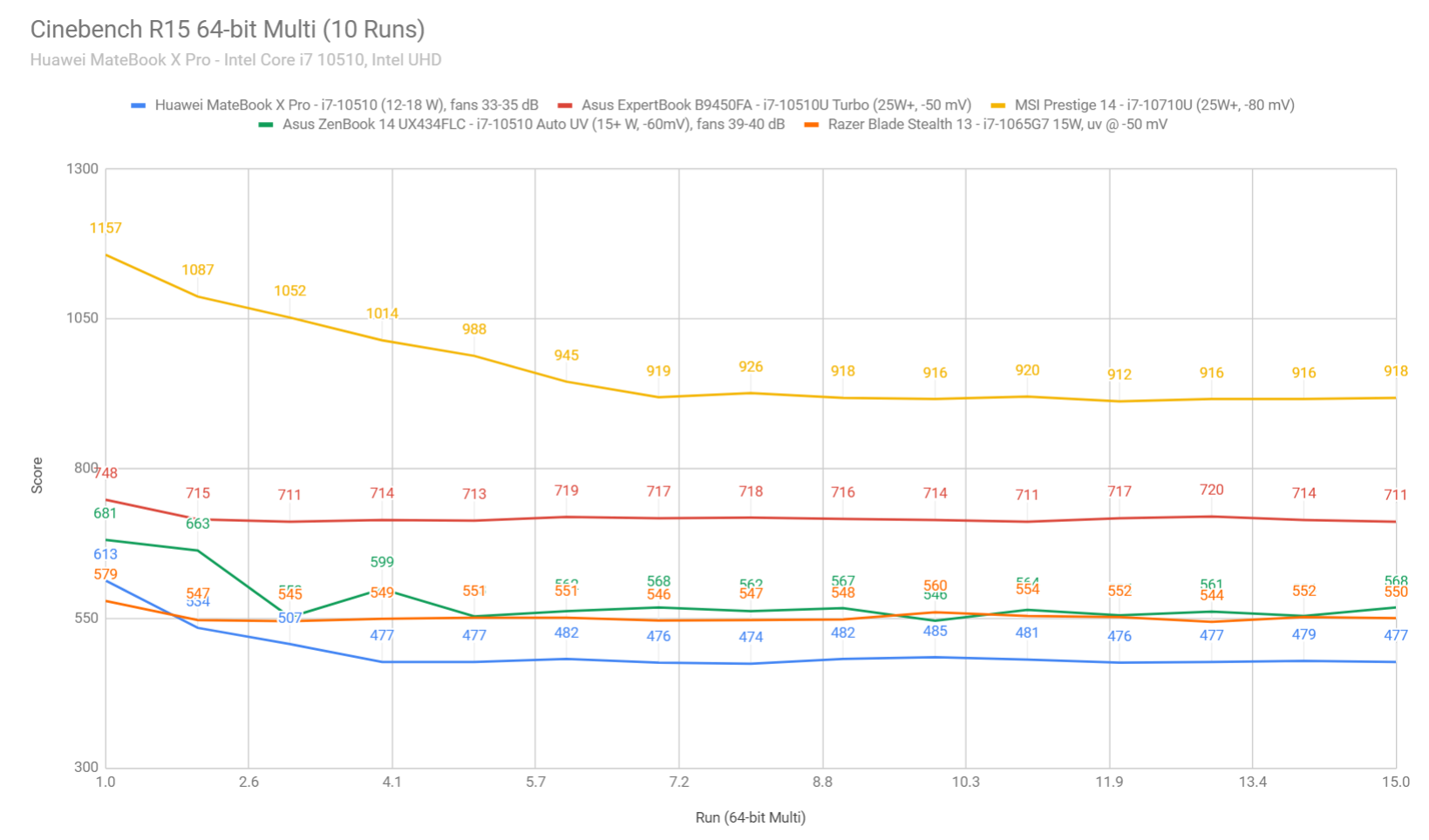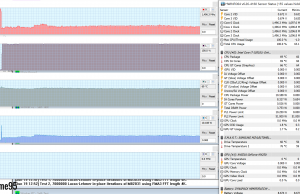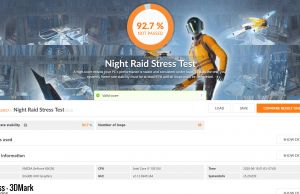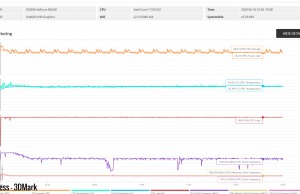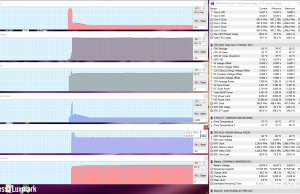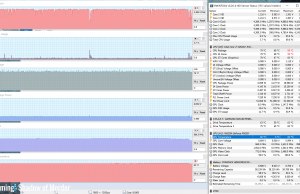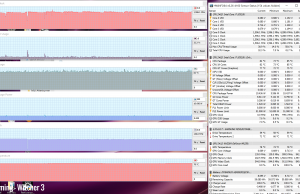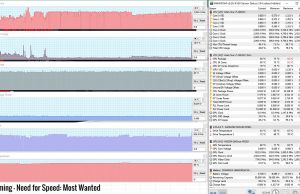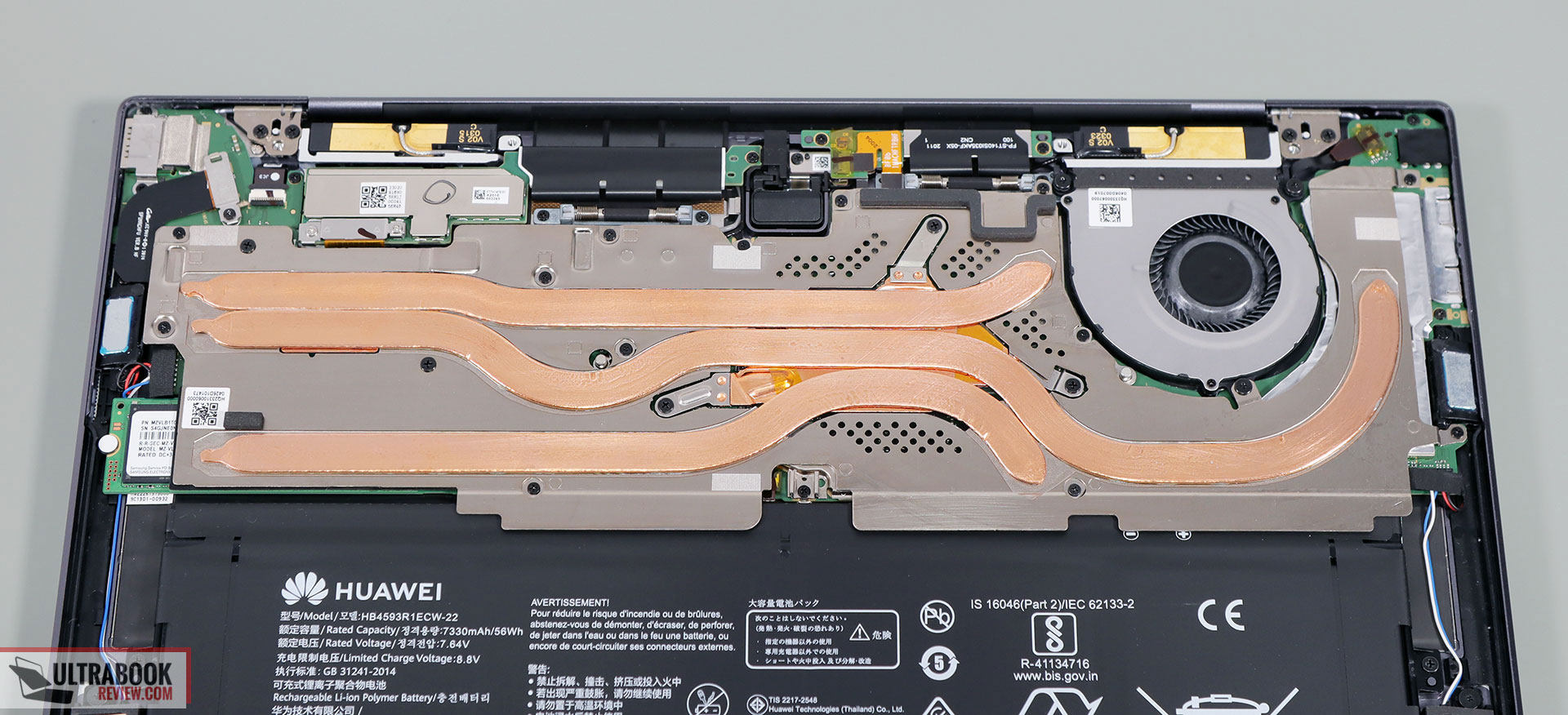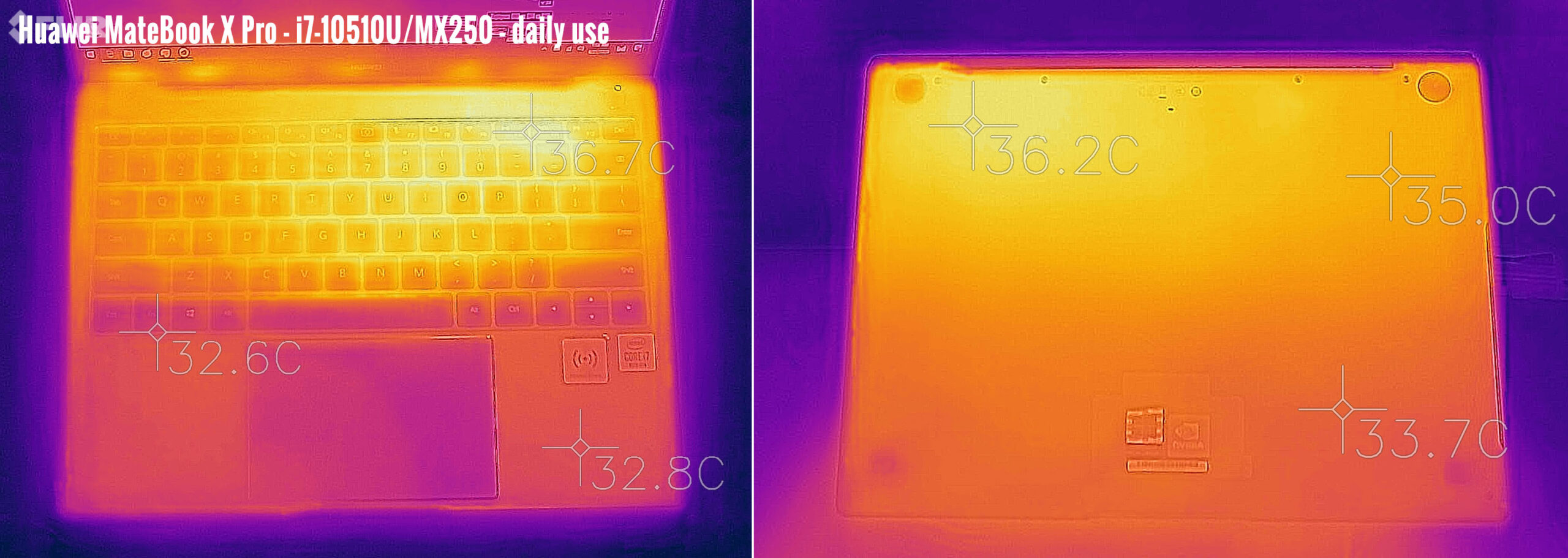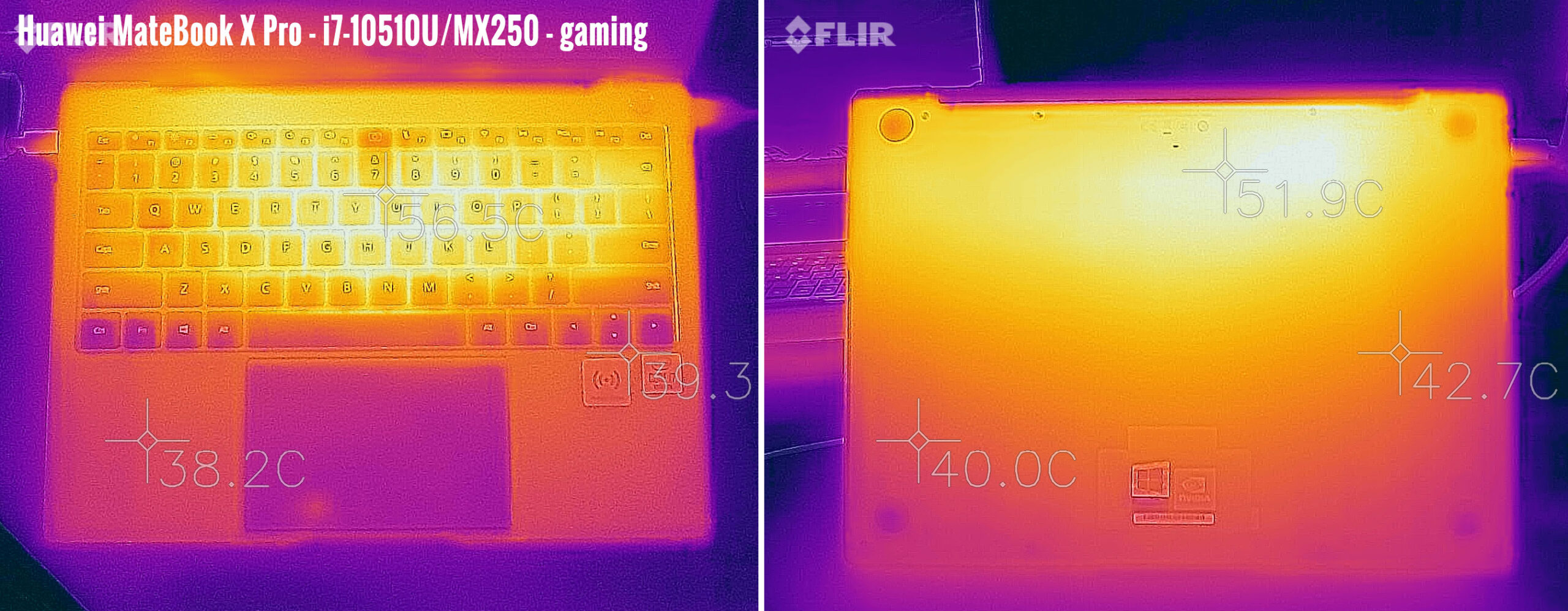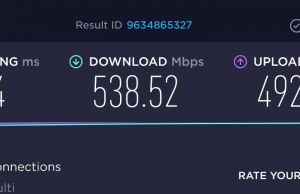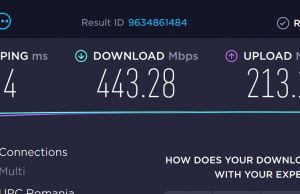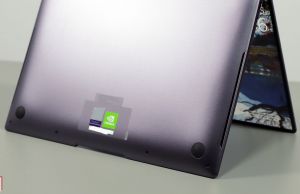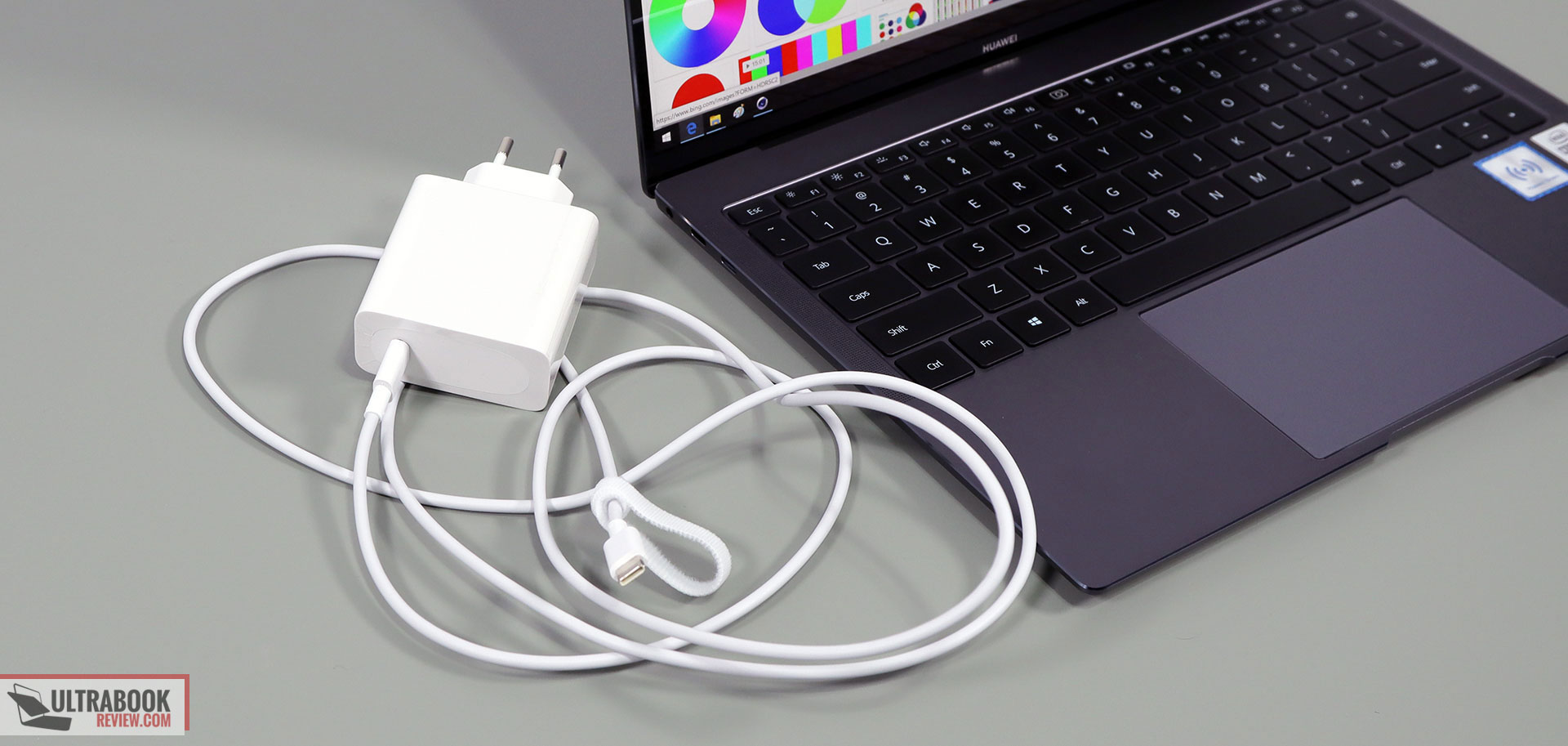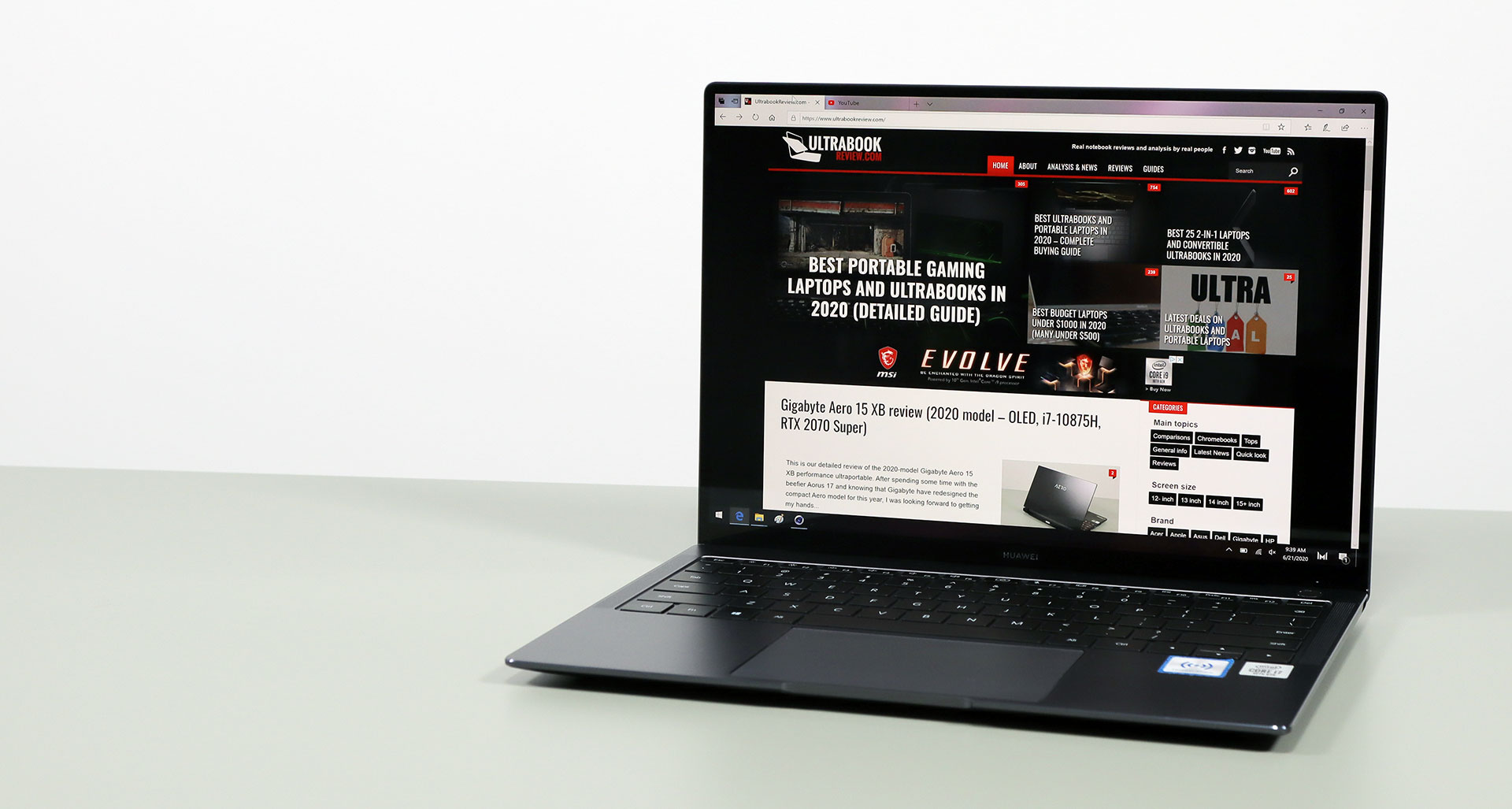We’ve tested several Huawei laptops over the years and ended up recommending most of them, such as the compact MateBook 13 and the competitively-priced MateBook 15.
We’ve never properly tested their flagship MateBook X Pro series, though, until now, when we got to spend time with the updated 2020 model.
Long story short, this 2020 is a hardware bump of the 2019 model, and that means it’s still an excellent all-day ultrabook with a nice looking and sturdily made chassis, a bright and punchy 3:2 display, a fast and quiet keyboard and the performance and battery life to cope well with daily activities. At the same time, though, this still struggles with demanding loads or games, primarily due to its unusual thermal design, that’s why my recommendation rather goes towards the cheaper Core i5 versions with Intel only graphics.
Our test model is the higher-tier i7 configuration with Nvidia MX250 graphics, though, and it was sent over by Huawei for this review. That has no impact on our findings, which we’ve gathered down below, with the strong points and the quirks.
Specs as reviewed
| Huawei MateBook X Pro 2020-model |
|
| Screen | 13.9 inch, 3000 x 2000 px, 3:2 aspect ratio, IPS, touch, glossy, JDI LPM139M422A panel |
| Processor | Intel Comet Lake Core i7-10510U CPU, 4C/8T |
| Video | Intel UHD 620 + Nvidia MX250 (GeForce 446.14) |
| Memory | 16 GB LPDDR3 2133 MHz dual-channel (soldered) |
| Storage | 1 TB M.2 NVMe SSD (80 mm – Samsung PM981 MZVLB1T0HBLR-00000) |
| Connectivity | Wireless 5 AC (Intel AC 9560) 2×2 MIMO, Bluetooth 5.0 |
| Ports | 1x USB-A 3.0, 2x USB-C with Thunderbolt 3, mic/headphone |
| Battery | 56 Wh, 65W USB-C charger |
| Size | 304 mm or 11.96” (w) x 217 mm or 8.54” (d) x 14.6 mm or 0.57” (h) |
| Weight | 2.93 lbs (1.33 kg)+ .44 lbs (.2 kg) charger and cables, EU version |
| Extras | backlit keyboard, HD webcam, quad speakers and quad microphones, finger sensor in the power button, ports adapter included |
Design and first look
The MateBook X Pro is one of the few ultrabooks with a 3:2 screen, and that makes it a compact product, but slightly taller than the standard 14-inch 16:9 notebook in its class. As a result, the design allows for a spacious arm-rest, a large clickpad and a full-size keyboard, as well as a quad-speaker system firing through grills that flank the keyboard and some side cuts in the bottom panel.
Even so, the X Pro is roughly the same size as the MacBook Pro 13 (13.3-inch 16:10 display) and only marginally larger than something like the ZenBook UX425 (14-inch 16:9 display), but incorporates a larger screen, thanks to the smaller bezels all around.
Huawei did not change the X Pro’s design in any way for this 2020 generation, and that means the camera is still a nose-cam implemented into the keyboard (between the F6 and F7 keys), and there’s no IR support. You do get a pretty good finger-sensor baked into the power button.
Format aside, this MateBook X Pro is also one of the sturdiest and nicest built Windows ultrabooks on the market, with a sturdy unibody interior and a strong screen chassis, that doesn’t flex or bend even when abused. The panel is also covered in a layer of protective glass, and supports touch.
I also find this to be a good looking laptop, with a smudge-friendly dark gray finishing, a clean interior design without any pesky lights, and Huawei branding under the screen and on the lid. Perhaps these could be have been a little more muted, especially the shinny one under the screen.
The product also ticks most of the right ergonomics requirements, yet, the nitpicker in me finds room for improvement. The screen is held in place by a smooth hinge system that allows easy one-hand operations and adjustments, but it can only go back to about 150 degrees, and not all the way flat as I’d want on an ultrabook. Huawei could have also implemented gripper rubber feet, and I would have appreciated a slightly friendlier front lip design. As it is, with the beveled edge and sharper part around that notch under the clickpad, it can unpleasantly bite into the wrists.
The IO is lined on the edges, with two USB-C ports with Thunderbolt 3 support on the left side, where there’s also a headphones jack, and a full-size USB-A slot on the right. Huawei bundles the laptop with an USB-C port-extender that adds VGA, USB A/C, and HDMI, so pretty much everything you’ll want on this sort of a laptop, except perhaps a card-reader. There’s a way past that with the included Huawei Share functionality, which lets you transfer content from compatible Huawei phones straight into the laptop via a simple touch, enabled through NFC. The app also allows using the phone/tablet as a secondary PC screen, but it only works with Huawei phones and I can’t recommend those given the current Google services situation.
Finally, I’ll also comment on Huawei’s cooling design. There are no intake cuts on the bottom, as with most notebooks with similar hardware, and both the intake and output happen through some tinny grills hidden under the hinge, on the back. Corroborated with the thermal design and low-noise fan profile, this implementation is fine for everyday use, but the X Pro struggles with heavier multitasking and demanding loads, as you’ll see down below.
Keyboard and trackpad
Huawei implemented a standard full-size chiclet keyboard on this laptop, and it’s one of the best in its class, but it is mostly tailored towards fast touch-typers and those who enjoy this kind of a short-stroke implementation.
With the limited resistance, soft feedback, and short travel, this gets very quick once you get used to its feedback. However, those of you coming from a desktop computer might struggle at first, and I was also expecting this to be quieter than it is.
The layout is simple and mostly fine, and the keys are plastic and flat. There are not dedicated PgUp/PgDn/Home/END keys, not even as secondaries bound to the arrows keys, the kind professional users might appreciate, and the kind you will find on other 14-inch notebooks these days. The 3:2 format does not leave room for an extra column of keys at the right here.
I’m also not a big fan of Huawei’s keyboard lighting. They went with black keys with white writing and illumination, so the contrast and visibility are as expected, however, the included LEDs are fairly dim, and even with the shallow profile, some light still creeps out from underneath some of the keycaps. There’s also ni physical Caps Lock indicator.
The clickpad, on the other hand, is among the best you can find on a Windows laptop. It’s a glass surface with Precision drivers, and it’s large enough to accommodate daily swipes and gestures. It also includes smooth and satisfying physical clicks, and I can only complain about the slight rattle when tapping this firmer in its lower half.
As for biometrics, there’s a finger sensor embedded into the power button, but not IR cameras.
Screen
The MateBook X Pro also gets one of the best displays you can find on any ultraportable laptop.
First off, it’s 3:2, so taller and more practical than the standard 16:9 or 16:10 screens out there, with more vertical room for content. This alone is going to put the X Pro on your map, and it’s backed up by an excellent quality panel, with 600+ nits of brightness, 1800:1 contrast ratio, wide viewing angles, and a resolution of 3000 x 2000 px that translates in crisp and smooth images and texts.
Here’s what we got in our tests, with a X-Rite i1 Display Pro sensor:
- Panel HardwareID: JDI LPM139M422A;
- Coverage: 96.8% sRGB, 67.5% AdobeRGB, 69.4% DCI P3;
- Measured gamma: 2.21;
- Max brightness in the middle of the screen: 626.53 cd/m2 on power;
- Min brightness in the middle of the screen: 12.86 cd/m2 on power;
- Contrast at max brightness: 1834:1;
- White point: 6800 K;
- Black on max brightness: 0.34 cd/m2;
- PWM: No.
The panel is well calibrated out of the box, and further calibrating it with our sensor lowers the maximum brightness by about 10%.
There’s still a fair degree of variation towards the corners, as well as not the best color-uniformity on the entire left side of our product. It’s not the kind you’ll notice with the naked eye, but the kind that might concern those interested in a color-accurate display for work, which you might expect from this 600+ nits and 68% sRGB panel. The MateBook X Pro’s professional-use abilities are also dragged down by the platform’s performance in that sort of demanding loads, as you’ll discover in our next section.
Hardware, performance and upgrade options
Out test version is a higher specced configuration of the 2020 Huawei MateBook X Pro, with the Intel Comet Lake Core i7-10510U processor, 16 GB of LPDDR3 RAM, 1 TB of fast SSD storage and dual graphics, with the Intel UHD embedded within the Core U platform and a dedicated Nvidia MX250 chip, in the efficient 10W 10DE 1D52 implementation meant for ultraportable laptops.
We’re also running our test on the software available as of late-June 2020 (BIOS 1.07, PC Manager 10.0.5.36, Nvidia GeForce 446.14 drivers). The minimalistic PC Manager software offers very little control over this laptop, without any performance, battery and screen profiles.
The SSD is the only updateable part on this laptop, but getting to it is a complicated task that will most likely void your warranty. Opening up the laptop’s back isn’t much, but once inside you’ll notice that the SSD is hidden behind the thermal module and you need to take that out as well to get to it, and then repaste the CPU/GPU. Complicated, so I’d just recommend getting the desired configuration from the get-go.
Huawei only offers this is two variants, though, this higher tier i7/MX250 model with 16 of RAM and 1 TB of storage, or a more affordable i5 model with 16 GB of RAM, 512 GB of storage and Intel UHD only graphics. This is perfectly capable of handling everyday activities, and it’s nice to see 16 GB of memory on the lower tier model as well, even if it’s still the slower LPDDR3 2133 MHz kind.
Don’t expect much in terms of performance in demanding loads, though, this laptop is made for everyday multitasking and casual use, but will choke when put to serious work. Both the CPU and the GPU clock down in these situations, and the limited thermal module is the culprit here. Huawei tries to keep temperatures and noise levels down, normal expectations from this sort of a computer, but that’s only possible with a performance toll.
We’ll first illustrate it with our standard Cinebench R15 loop test. The i7-10510U only runs at 12W of power in sustained loads, which results in low frequencies, low scores, cool temperatures in the 60s C, and very quiet fans. This is a way too aggressive profile, and judging by these findings, the laptop could at least run at 15+W in sustained loads.
Undervolting with Throttle stop is a trick we can normally use to increase the performance of these Core U laptops, but it didn’t do anything on this sample.
For comparison, this same i7 stabilizes at 15 to 25W in other 14-inch laptops we’ve tested lately, with a significant increase in performance, and a slight increase in noise.
Furthermore, the 6Core Intel platforms and the entire range of AMD Ryzen 4000 U devices smoke the X Pro in this test.
We then tested the CPU performance in the gruesome Prime95 stress test, in which case it stabilizes at 10+ W and sub-stock frequencies.
But how about combined CPU + GPU loads. First off, this fails the 3DMark stress test, which loops the same scene 20-times and logs performance degradation as the components heat-up, and that’s exactly what’s happening here. As for the Luxmark test that pushes both the CPU and GPU to their max, the system quickly throttles the processor at only .9 GHz, but allows the GPU to run at full-power, which suggests imbalances and potential stuttering caused by the low-clocked processor.
Next, we ran the entire suite of tests and benchmarks, on the stock Best Performance profile in Windows.
- 3DMark 13 – Fire Strike: 2495 (Graphics – 2708, Physics – 5537, Combined – 1034);
- 3DMark 13 – Night Raid: 8778 (Graphics – 11752, CPU – 3607);;
- 3DMark 13 – Time Spy: 864 (Graphics – 784, CPU – 2082);
- AIDA64 Memory test: Write: Read: 28876 MB/s, Read: 31608 MB/s, Latency: 78.2 ns;
- Uniengine Superposition – 1080p Medium: 1929;
- Handbrake 1.3.1 (4K to 1080p encode): 16.28 average fps;
- PassMark: Rating: 3994 (CPU mark: 9332, 3D Graphics Mark: 2214, Disk Mark: 25431);
- PCMark 10: 3452 (Essentials – 7298, Productivity – 6518, Digital Content Creation – 2348);
- GeekBench 4.4.2 64-bit: Single-Core: 5584, Multi-core: 17250;
- GeekBench 5.0.1 64-bit: Single-Core: 1184, Multi-core: 2945;
- CineBench R15 (best run): CPU 621 cb, CPU Single Core 178 cb;
- CineBench R20 (best run): CPU 1266 cb, CPU Single Core 413 cb;
- x264 HD Benchmark 4.0 32-bit: Pass 1 – 153.42 fps, Pass 2 – 33.38 fps;
- x265 HD Benchmark 64-bit: 107.82 s.
We also ran a few of these tests on the -60 mV undervolted CPU profile, without noticing any changes. For some reason, we could not undervolt this laptop with Throttlestop, which is pretty much a fist in many years.
- Uniengine Superposition – 1080p Medium: 1913;
- GeekBench 5.0.1 64-bit: Single-Core: 1182, Multi-core: 2964;
- CineBench R15 (best run): CPU 618 cb, CPU Single Core 178 cb;
- CineBench R20 (best run): CPU 1184 cb, CPU Single Core 397 cb;
- x265 HD Benchmark 64-bit: 108.44 s.
We also ran some Workstation related loads:
- Blender 2.82 – BMW Car scene- CPU Compute: 11m 52s;
- Blender 2.82 – Classroom scene – CPU Compute: 39m 5s;
- Luxmark 3.1 – Luxball HDR – OpenCL CPUs + GPUs score: 5529.
Then we ran a couple of DX11, DX12, and Vulkan titles on the Best Performance profile. Here’s what we got:
| Core i7-10510U + MX250 10W | |
| Bioshock Infinite (DX 11, Low Preset) – 1920 x 1080 px | 67 fps (50 fps – 1% low) |
| Far Cry 5 (DX 11, Low Preset, no AA) – 1920 x 1280 px | 18 fps (14 fps – 1% low) |
| Middle Earth: Shadow of Mordor (DX 11, Lowest Preset) – 1600 x 1200 px | 22 fps |
| Need for Speed: Most Wanted (DX 11, Low settings) – 1920 x 1080 px | 60 fps (48 fps – 1% low) |
| Rise of the Tomb Raider (DX 12, Lowest Preset, no AA) – 1920 x 1080 px | 17 fps |
| Strange Brigade (Vulkan, Low Preset) – 1920 x 1080 px | 30 fps (22 fps – 1% low) |
| The Witcher 3: Wild Hunt (DX 11, Low Preset, Hairworks Off) – 1920 x 1080 px | 21 fps avg (14 fps – 1% low) |
- Battlefield V, The Witcher 3, Dota 2 – recorded with MSI Afterburner in game mode;
- Bioshock Far Cry 5, Middle Earth, Strange Brigade, Red Dead Redemption 2, Tomb Raider games – recorded with the included Benchmark utilities.
Older games such as NFS: Most Wanted or Bioshock are playable on this notebook, while more recent titles are not, or you’d have to trim the resolution to 720p. Even so, the performance is not what you’d expect from the hardware, with both the CPU and GPU running at fairly low power levels. The GPU averages around 1.2 GHz in the less demanding titles, but goes down to .8 GHz on Witcher 3, a fair bit down from its maximum potential Turbo clocks of 1.6 GHz.
Furthermore, you should consider the fact that older titles might not support the screen’s 3:2 aspect ratio of its higher resolution, which means that you’ll have to accept stretched images in most cases, or at least some black bars around the content. This aspect, corroborated with the limited performance the high external temperatures make the X Pro unsuited for gaming and demanding CPU+GPU tasks in general, in comparison to better implementation of the same sort of hardware. And that’s without even discussing this platform’s overall worth at this point, given the excellent Renoir Ryzen ultraportables out there, but also the Intel/AMD units with the updated and more competent MX350 graphics chips
Noise, Heat, Connectivity, speakers, and others
The thermal design looks complex, with a fan and several heatpipes covering most of the motherboard, but a closer inspection would reveal that these heatpipes are not connected to any radiators. Instead, they mostly provide passive cooling, and the fan is in charge of creating airflow between the motherboard and this thermal module.
This sort of weird design proves inefficient for the kind of hardware in this laptop, especially since Huawei also tries to balance with cool internal temperatures and a quiet fan. This is almost inaudible with daily use, and ramps up to 41-42 dB with games.
However, even with these compromises, plenty of the internal heat spreads onto the exterior chassis, with a large part of the interior going past 50-degrees C with games, and running in the 35-40 degrees with daily use, which is fine, but still a little on the warmer side.
*Daily Use – streaming Netflix in EDGE for 30 minutes, Better Battery profile, fans at 27-33 dB
*Gaming – playing Shadow of Mordor for 30 minutes, Best Performance profile, fans at 41-42 dB
For connectivity, there’s still only a WiFi 5 Intel 9560 wireless module inside this laptop, with Bluetooth 5.0, and not the AX solution found on most modern ultrabooks. I wouldn’t worry about it much, though, it’s still a fast and reliable wireless implementation, both near the router and at 30 feet with obstacles in between.
The speakers file through the cuts around the keyboard and the laterals, and they’re fine, but not great. We measured volumes of up to 74-75 dB at head-level, and middling sound quality, still lacking a fair bit in the lower end.
There’s also a 720p camera on the MateBook X Pro, placed behind that key between F5 and F6. I’d reckon that might have seemed cool at launch, but it’s poorly positioned and impractical in real-life, and takes washed out and muddy images. A proper FHD camera at the top of the screen is the way to do it right, and yet still nobody does it.
Battery life
There’s a 56 Wh battery inside this Matebook X Pro, well-sized for a 14-inch computer, even if not the largest in the class. The high-resolution screen takes its toll, but even so, this lasts for a fair bit on a charge.
Here’s what we got on our review unit, with the screen’s brightness set at around 120 nits (~50 brightness).
- 9 W (~7 h of use) – text editing in Google Drive, Better Battery Mode, screen at 50%, Wi-Fi ON;
- 6.2 W (~9+ h of use) – 1080p fullscreen video on Youtube in Edge, Better Battery Mode, screen at 50%, Wi-Fi ON;
- 6 W (~9-10 h of use) – Netflix fullscreen in Edge, Better Battery Mode, screen at 50%, Wi-Fi ON;
- 11 W (~5-6 h of use) – browsing in Edge, Better Performance Mode, screen at 50%, Wi-Fi ON.
Huawei pairs the MateBook X Pro with a compact 65 Wh USB-C chargers, adequately sized for the hardware inside.
Price and availability
This 2020 Huawei MateBook X Pro is available in most regions, in mostly two configurations:
- Core i5-10210U, 16 GB RAM, 512 GB SSD
- Core i7-10510U and Nvidia MX250, 16 GB of RAM, 1 TB SSD
Both are expensive, though. We’re looking at 1600 EUR/1400 GBP for the i5 model, and 1900 EUR/1600 GBP for the i7, at launch. No word on US pricing for now, though.
Follow this link for updated prices and configurations at the time you’re reading the article.
Final thoughts
Two years ago when Huawei announced the original MateBook X Pro, it was ahead of its time and superior to many of its competitors. Quick forward to 2020, the sturdy craftsmanship, the excellent 3:2 display, the quick and comfortable keyboard, the fine everyday performance and battery life are still among its major selling points, but the limited thermal design and performance in demanding loads, corroborated with the steep pricing, eat into its overall worth.
In fact, if you’ll decide on one of these, I’d stick with the i5 models, there’s no point in getting the i7 and the MX250 GPU on this device.
Furthermore, a lot has changed over these years with the competition. The Surface Laptop, the XPS 13, the Elite Dragonfly, the X1 Carbon, or even the updated ZenBooks and ExpertBooks are much more competitive products these days, and most of them more affordable than the X Pro. The MateBook still holds one important advantage in most markets (where the Surface Laptop is not available), that splendid 3:2 display, but it might not be enough to justify the higher pricing, especially with more affordable 3:2 notebooks also available these days, such as Huawei’s own MateBook 13 or even the Acer Swift 3.
Overall, though, I still find the 2020 MateBook X Pro to be one of the better premium ultrabooks out there, yet I’m not entirely convinced it is worth the kind of money Huawei ask for it these days, given its quirks and the amount of solid competition out there. Thoughts?
The post Huawei MateBook X Pro review (2020 model – Core i7, MX250) appeared first on UltrabookReview.com

